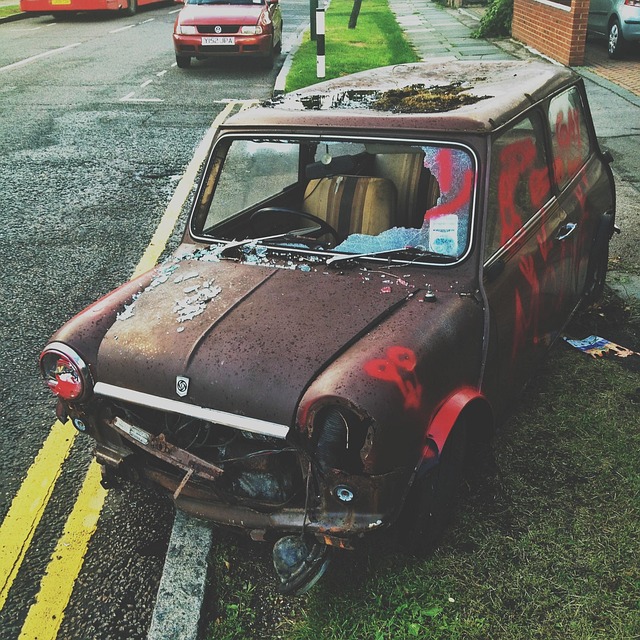Pedestrian truck accidents present unique challenges due to the significant weight and force involved, often resulting in severe injuries or wrongful death claims. These incidents require investigating driver negligence, vehicle maintenance, environmental factors, partnership disagreements, and contract disputes. Key factors differentiate these accidents from others—like car collisions—due to the vulnerable pedestrian versus the large, heavy vehicle, making liability determination, evidence collection, and injury severity assessment complex. Prevention strategies involve driver training (defensive driving, alertness in busy zones) and environmental design (improved road signage, pedestrian-activated crosswalks, reduced truck routes, legal accountability).
Pedestrian truck accidents present unique challenges distinct from typical traffic incidents. These collisions often result in severe injuries or fatalities due to the immense force involved. This article delves into understanding the specific factors contributing to such accidents, comparing them with other traffic events. We explore key differences and implications, highlighting the importance of targeted prevention strategies to mitigate these high-risk encounters. By examining these aspects, we aim to enhance safety measures and reduce the impact of pedestrian-truck collisions.
- Understanding Pedestrian Truck Accidents: Unique Challenges and Factors
- Comparing with Other Traffic Incidents: Key Differences and Implications
- The Impact and Prevention of Pedestrian-Truck Collisions
Understanding Pedestrian Truck Accidents: Unique Challenges and Factors

Pedestrian truck accidents present a unique set of challenges and factors that distinguish them from other traffic collisions. When a large commercial vehicle collides with a pedestrian, the outcomes can be devastating due to the significant weight and force involved. Pedestrians, being vulnerable road users, often sustain severe injuries or even face wrongful death claims in such incidents. Understanding these accidents requires considering various aspects, including driver negligence, vehicle maintenance, and environmental factors.
Partnership disagreements and contract disputes may also play a role, especially if the truck was involved in a business operation. For instance, issues related to driver training, load securing, or speed management can contribute to the accident’s causes. Investigating these accidents involves a thorough examination of the scene, vehicle damage, pedestrian injuries, and potential legal implications. It is crucial to analyze not only the immediate events but also the broader context of commercial trucking operations to identify strategies for prevention and improved safety measures in the future.
Comparing with Other Traffic Incidents: Key Differences and Implications

When comparing pedestrian truck accidents with other traffic incidents, several key differences emerge that significantly impact how these cases are handled. Unlike typical car collisions involving two or more automobiles, a pedestrian truck accident often involves a vulnerable individual on foot facing off against a large, heavy vehicle. This fundamental disparity leads to unique challenges and considerations in terms of liability, evidence collection, and injury severity.
The implications of these differences are profound. In cases of slip and fall accidents or real estate disputes, the focus typically remains on environmental factors and negligence. However, in pedestrian truck accidents, the driver’s behavior, the vehicle’s design, and the pedesterian’s actions all play intricate roles. This complexity often necessitates a more thorough investigation to determine responsibility, which can have significant impacts on personal injury claims and compensation processes.
The Impact and Prevention of Pedestrian-Truck Collisions

Pedestrian truck accidents, while less common than other traffic collisions, often result in more severe injuries and fatalities due to the significant size and weight disparity between trucks and pedestrians. These accidents can occur when a truck fails to yield or maintain a safe speed around pedestrians, leading to devastating consequences. One of the primary challenges is that large vehicles have larger blind spots, making it easier for drivers to lose sight of pedestrians, especially in urban areas with heavy foot traffic.
Prevention strategies focus on both driver training and environmental design. Employers should ensure truck drivers are adequately trained to navigate through busy pedestrian zones and understand the limitations of their vehicles. This includes practicing defensive driving techniques and staying alert at all times. Additionally, cities can play a crucial role by implementing infrastructure changes, such as improving road signage, installing pedestrian-activated crosswalks, and reducing truck routes in areas with high foot traffic, thereby mitigating risks and holding accountable those responsible through the help of an auto accident attorney if necessary. These measures aim to create safer environments for pedestrians, minimizing the risk of these severe accidents and ensuring that employment contracts reflect fair practices regarding driver training and accountability.
Pedestrian truck accidents present distinct challenges compared to other traffic incidents, primarily due to the size, weight, and force involved. Understanding these unique factors is crucial for implementing effective prevention strategies. By comparing and contrasting these accidents with typical collisions, we can identify key differences that impact safety measures, liability, and overall accident management. This knowledge underscores the need for specialized approaches in mitigating pedestrian-truck collisions, ensuring both road safety and fair legal considerations for all parties involved.






